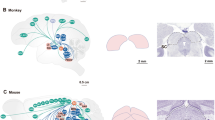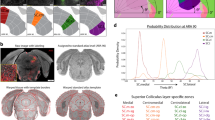Abstract
The anterior ectosylvian (AES) and rostral lateral suprasylvian (rLS) sulci send critical signals to multisensory superior colliculus (SC) neurons that enable them to integrate information from different senses. When either of these areas is temporarily deactivated in adult animals, the ability of SC neurons to integrate multisensory information and, thereby, enhance their responses to cross-modal stimuli is temporarily compromised. As a consequence, the ability to use cross-modal stimuli to enhance SC-mediated behavioral performance is also compromised. In contrast, removal of either one of these areas during early life has little effect on the development of multisensory processes in the SC or on SC-mediated multisensory behaviors and these animals seem very similar to normal controls. These observations suggest that there is considerable plasticity in these cortico-collicular systems during early life, with each area able to compensate for the early loss of the other. However, when both AES and rLS are removed early in life, there appears to be no compensation. The SC neurons now deal with sensory stimuli, even those embedded in multisensory complexes, as if they were there alone, precluding any SC-mediated behavioral benefit to cross-modal stimuli.







Similar content being viewed by others
References
Benedek G, Mucke L, Norita M, Albowitz B, Creutzfeldt OD (1988) Anterior ectosylvian visual area (AEV) of the cat: physiological properties. Prog Brain Res 75:245–255
Bernstein IH, Clark MH, Edelstein GH (1969) Effects of an auditory signal on visual reaction time. J Exp Psychol 80:567–569
Buonomano DV, Merzenich MM (1998) Cortical plasticity: from synapse to maps. Ann Rev Neurosci 21:149–186
Clarey JC, Irvine DRF (1986) Auditory response properties of neurons in the anterior ectosylvian sulcus of the cat. Brain Res 386:12–19
Clemo HR, Stein BE (1982) Somatosensory cortex: A “new” somatotopic representation. Brain Res 235:162–168
Clemo HR, Stein BE (1983) Organization of a fourth somatosensory area of cortex in cat. J Neurophysiol 50:910–925
Corneil B, Munoz D (1996) The influence of auditory and visual distractors on human gaze shifts. J Neurosci 16:8193–8207
Engelken E, Stevens K (1989) Saccadic eye movements in response to visual, auditory, and bisensory stimuli. Aviat Space Environ Med 60:762–768
Frens MA, Van Opstal AJ, Van der Willigen RF (1995) Spatial and temporal factors determine auditory-visual interactions in human saccadic eye movements. Percept Psychophys 57:802–816
Giard M-H, Peronnet F (1999) Auditory-visual integration during multimodal object recognition in humans: a behavioral and electrophysiological study. J Cogn Neurosci 11:473–490
Gielen SCAM, Schmidt RA, Van den Heuvel PJM (1983) On the nature of intersensory facilitation of reaction time. Percept Psychophys 34:161–168
Goldberg ME, Wurtz RH (1972) Activity of superior colliculus in behaving monkey II. Effect of attention on neuronal responses. J Neurophysiol 35:560–574
Goldring JE, Dorris MC, Corneil BD, Ballantyne PA, Munoz DP (1996) Combined eye-head gaze shifts to visual and auditory targets in humans. Exp Brain Res 111:68–78
Harrington LK, Peck CK (1998) Spatial disparity affects visual-auditory interactions in human sensorimotor processing. Exp Brain Res 122:247–252
Hughes HC, Reuter-Lorenz PA, Nozawa G, Fendrich R (1994) Visual–auditory interactions in sensorimotor processing: saccades versus manual responses. J Exp Psychol Hum Percep Perform 20:131–153
Jiang W, Stein BE (2002) Effect of early ablation of anterior ectosylvian (AES) and rostral lateral suprasylvian (rLS) cortex on multisensory processes in the superior colliculus (SC). Soc Neurosci Abstr 28:560–566
Jiang W, Jiang H, Stein BE (2000) Influences from the anterior ectosylvian sulcus (AES) and rostral lateral suprasylvian sulcus (rLS) are critical for multisensory orientation behavior. Soc Neurosci Abstr 26:1220
Jiang W, Wallace MT, Jiang H, Vaughan JW, Stein BE (2001) Two cortical areas mediate multisensory integration in superior colliculus neurons. J Neurophysiol 85:506–522
Jiang W, Jiang H, Stein BE (2002) Two corticotectal areas facilitate multisensory orientation behavior. J Cogn Neurosci 14:1240–1255
Kadunce DC, Vaughan JW, Wallace MT, Benedek G, Stein BE (1997) Mechanisms of within-modality and cross-modality suppression in the superior colliculus. J Neurophysiol 78:2834–2847
Lee CS, Chung S, Kim J, Park J (1991) Auditory facilitation of visually guided saccades. Soc Neurosci Abstr 17:862
McHaffie JG, Kruger L, Clemo HR, Stein BE (1988) Corticothalamic and corticotectal somatosensory projections from the anterior ectosylvian sulcus (SIV cortex) in neonatal cats: an anatomical demonstration with HRP and 3H-leucine. J Comp Neurol 274:115–126
Meredith MA, Clemo HR (1989) auditory cortical projection from the anterior ectosylvian sulcus (Field AES) to the superior colliculus in the cat: an anatomical and electrophysiological study. J Comp Neurol 289:687–707
Meredith MA, Stein BE (1996) Spatial determinants of multisensory integration in cat superior colliculus. J Neurophysiol 75:1843–1857
Mucke L, Norita M, Benedek G, Creutzfeldt O (1982) Physiologic and anatomic investigation of a visual cortical area situated in the ventral bank of the anterior ectosylvian sulcus of the cat. Exp Brain Res 46:1–11
Olson CR, Graybiel AM (1987) Ectosylvian visual area of the cat: location, retinotopic organization, and connections. J Comp Neurol 261:277–294
Perrott DR, Saberi K, Brown K, Strybel TA (1990) Auditory psychomotor coordination and visual search performance. Percept Psychophys 48:214–226
Rauschecker JP (1995) Compensatory plasticity and sensory substitution in the cerebral cortex. Trends Neurosci 18:36–43
Rauschecker JP (1999) Auditory cortical plasticity: a comparison with other sensory systems. Trends Neurosci 22:74–80
Redgrave P, Simkins M, McHaffie JG, Stein BE (1996) Nociceptive neurons in rat superior colliculus II: effects of lesions to contralateral descending output pathway on nocifensive behaviors. Exp Brain Res 109:197–208
Sparks DL (1986) Translation of sensory signals into commands for control of saccadic eye movements: role of primate superior colliculus. Physiol Rev 66:118–171
Stein BE, Clamann HP (1981) Control of pinna movements and sensorimotor register in cat superior colliculus. Brain Behav Evol 19:180–192
Stein BE, Meredith MA (1993) The merging of the senses. MIT Press, Cambridge, MA
Stein BE, Labos E, Kruger L (1973) Sequence of changes in properties of neurons of superior colliculus of the kitten during maturation. J Neurophysiol 36:667–679
Stein BE, Spencer RF, Edwards SB (1983) Corticotectal and corticothalamic efferent projections of SIV somatosensory cortex in cat. J Neurophysiol 50:896–909
Stein BE, Huneycutt WS, Meredith MA (1988) Neurons and behavior: The same rules of multisensory integration apply. Brain Res 448:355–358
Stein BE, Meredith MA, Huneycutt WS, McDade L (1989) Behavioral indices of multisensory integration: Orientation to visual cues is affected by auditory stimuli. J Cogn Neurosci 1:12–24
Wallace MT, Stein BE (1994) Cross-modal synthesis depends on input from cortex. J Neurophysiol 71:429–432
Wallace MT, Stein BE (1997) Development of multisensory integration in cat superior colliculus. J Neurosci 17:2429–2444
Wallace MT, Stein BE (2000) Onset of cross-modal synthesis in the neonatal superior colliculus is gated by the development of cortical influences. J Neurophysiol 83:3578–3582
Wallace MT, Meredith MA, Stein BE (1993) Converging influences from visual, auditory, and somatosensory cortices onto output neurons of the superior colliculus. J Neurophysiol 69:1797–1809
Wallace MT, Hairston WD, Stein BE (2001) Long-term effects of dark-rearing on multisensory processing. Soc Neurosci Abstr 27:511–516
Wallace MT, Hairston WD, Perrault, TJ, Stein BE (2002) Spatial disparity rearing alters the multisensory organization of the superior colliculus. Soc Neurosci Abstr 28:220–225
Wickelgren BG, Sterling P (1969) Effect on the superior colliculus of cortical removal in visually deprived cats. Nature 224:1032–1033
Wilkinson LK, Meredith MA, Stein BE (1996) The role of anterior ectosylvian cortex in cross-modality orientation and approach behavior. Exp Brain Res 112:1–10
Zahn JR, Abel LA, Dell‘Osso LF (1978) Audio-ocular response characteristics. Sensory Proc 2:32–37
Acknowledgments
These experiments were supported by NIH Grant NS36916.
Author information
Authors and Affiliations
Corresponding author
Rights and permissions
About this article
Cite this article
Stein, B.E. The development of a dialogue between cortex and midbrain to integrate multisensory information. Exp Brain Res 166, 305–315 (2005). https://doi.org/10.1007/s00221-005-2372-0
Received:
Accepted:
Published:
Issue Date:
DOI: https://doi.org/10.1007/s00221-005-2372-0




